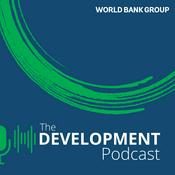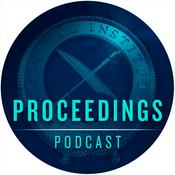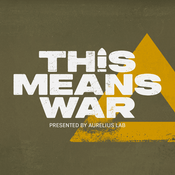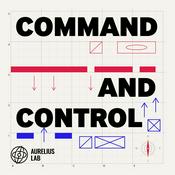28 episodes

How will this feel different?
01/7/2024 | 49 mins.
The competition for a commercial strategic partner for the British Army as part of the Land Training System continues. The real question that emerges is not one of cost or value but rather about what this will feel like for a corporal or a captain after a year of commercial/military partnering. With seven consortia competing to get the contract, I spoke to Steven Hart leading the Omnia team, about what the LTS/CSST contract means for industry, what the risks are, and what soldiers should be expecting after the industry partner is in place.

The British Army Land Training System
29/5/2024 | 51 mins.
Over the past 12 months the British Army has designed a model to train its entire force to a set standard. It will also have the credibility and capacity to train the follow-on force, whatever that is, when the time comes. The new way of training is built on three interlinked blocks – Tradewinds (that provides the skills at individual level within a sub-unit), Cyclone (the primary sub unit training block -designed to deliver individual and collective competencies), and Storm (a reinvigorated combined-arms, formation level event – the optimization phase). Within the current plan all sub-units will conduct a dedicated 10-week training period each and every year providing the UK with more military capability, more options for responses, and increased lethality across the British Army. More importantly, the new system is driven by the people within units – not the system. This means that, perhaps for the first time, the Army can exploit its people, their drive and determination to be 'the best', and build on the differentiation in capabilities between units. The shift in emphasis is warranted: the British Army is so not the homogenous mass of yesteryear, meaning that a reversion to a Cold War training modalities would be disingenuous to the soldiers of today. As Major General Chris Barry tells us, shifting to a new way of training that best fits the demands of a smaller, busier, more technology dependent force of today (and tomorrow) was the only way to realise the operational demands and credibly deter adversaries.

CWC - The Graduates
03/4/2024 | 33 mins.
Peter sits down with two officers from the British Army who had just completed the culminating exercise of the Captain's Warfare Course. The discussion happened in a field on Salisbury Plain as the rest of the team tore down the infrastructure and camp around us. The difference these two individuals exhibited from when Peter met them at the start of the course was striking. Here were 2 soldiers who had changed: they were no longer just able to command at a company level and contribute to C2 at the Battle Group level within their specialisation, but both now understand the Brigade level of command – and the processes used there. What's more they clearly both seem able to contribute – in a meaningful way – to HQ staff functions at that level. After only 6 weeks education and training, that's quite some leap. Their confidence, their attitude, just how they held themselves was very different to the people I met just a few weeks previously. Clearly capable officers in November, by December they had an aura of success about them – and that cynical humour that is a hallmark of British soldiers – perhaps soldiers everywhere. There is overwhelming conclusion from being with the team at CW: This course works. And It is getting better each time.

The Grizz
07/2/2024 | 27 mins.
Two Junior NCOs from the British Army talk about their experiences of the Armoured Close Recce course in Warminster back in December 2023. In recording this, I was struck by the professionalism with which these two young soldiers handled themselves. Accutely aware of their own inexperience, their own failings, as well as the legacy they had to live up to. Their lack of fear in confronting these challenges marked – to me – a huge humility in them, and a self assurance in their abilities and their instructors. Kudos to the senior NCO team at Warminster for delivering to junior NCOs the kind of discipline, freedoms and confidence that means they are the envy of many other militaries. This is not something create overnight – it takes a culture of excellence, of focused determination, and of belief in the next generation. And they seem to have all that in spades.

CWC – The Directing Staff
24/1/2024 | 33 mins.
The Captain's Warfare Course in Warminster delivers the key skills to the people expected to execute 'the fight' in the British Army. During my visits to the team at Warminster, I was struck by the quality of the staff that had been selected for the Directing Staff positions. This group of people really understood the demands of what was needed from staff officers under the extreme stress of combat. Many of them had been there, done that, and got the t-shirt. Often, they had done it more than once and in more than one sort of headquarters. And more than one sort of war. That diversity of experience is important. The validation of the CWC students cannot, in many ways, be judged for many years. The student coming off the course doesn't know what they need to know. Their employers – in Brigade headquarters or elsewhere – will also not be able to judge the students post course for at least 6 months to a year after their arrival. And those views will vary hugely depending on the context of each fight: COIN, CT, Conventional arms, hot, arctic, jungle, urban, rural, airborne, armour heavy, coalition, or sovereign – each brings a different set of challenges and requirements. Understanding this diversity requires a set of skills, a set of people that want to adapt and evolve training as fast as realities on the battlefields change, but retaining the foundations and core skills that are needed across the differing demands in different HQs on different operations. All of that requires a dynamism and fluidity in training that too much structure can stymie. Rhys Pogson-Hughes-Emanuel exemplified that approach – something as rare as unicorns back in the day. He had obviously thought a lot about what he wanted the students to leave with: about behaviours and confidence as much as foundational knowledge.
More Government podcasts
Trending Government podcasts
About How To Train A Military
Listen to How To Train A Military, Any Questions? and Any Answers? and many other podcasts from around the world with the radio.net app
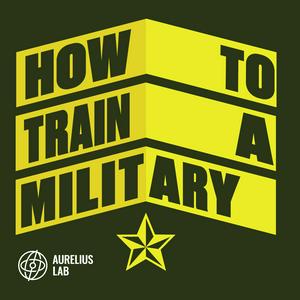
Get the free radio.net app
- Stations and podcasts to bookmark
- Stream via Wi-Fi or Bluetooth
- Supports Carplay & Android Auto
- Many other app features
Get the free radio.net app
- Stations and podcasts to bookmark
- Stream via Wi-Fi or Bluetooth
- Supports Carplay & Android Auto
- Many other app features


How To Train A Military
download the app,
start listening.

















